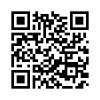PERBANDINGAN KEEFEKTIFAN TEKNIK RENCANA PRABACA DAN TEKNIK HUBUNGAN TANYA-JAWAB DALAM PEMAHAMAN BACAAN
Downloads
(Title: Comparing the Effectiveness of Pre-Reading Plan (Prep) and Question-Answer Relationship (Qar) on The Reading Comprehension). This research aimed to find out which technique was the more effective among the Pre-Reading Plan (PreP), Question-Answer Relationship (QAR), and conventional technique in the reading comprehension. This research was quasi-experimental with pretest-posttest control group design. The population was all of the students of Grade VII Imogiri 3 JHS. The determination of sample using random sampling and was selected Grade VIIB as the experimental group 1 (PReP), Grade VIID as the experimental group 2 (QAR), and Grade VIIC as the control group (conventional technique). The instrument is a multiple choice test of reading comprehension based on reading standards of PISA 2015. Data were analyzed using one way ANOVA test and continued with Post Hoc Scheffe test with significance level of 0.05. The results of this study indicate PReP more effective than QAR and conventional techniques in the reading comprehension.
Keywords: Pre-Reading Plan, Question-Answer Relationship, reading comprehension.
Downloads
Moreillon, J. (2007). Collaborative Strategies for Teaching Reading Comprehension. Chicago: American Library Assosiation.
Mullis, I.V.S. Dkk. (2012). PIRLS 2011 International Resulti in Reading. Chelstnut Hill, MA: Boston Collage.
OECD. (2013). PISA 2015 Draft Reading Literacy Framework. USA: OECD-PISA.
OECD. (2016). Indonesian Result From PISA 2015. USA:OECD-PISA.
Oliver, I.M. (1997). Effects of Prereading Strategies on Comprehension Abilities of Fourth and Fifth Grade Students. Pepperdine University. Proquest Dissertations Publishing. 9722406.
Pao, B. (2016). The Influence of Reading Habit and Grammar Knowledge on the Students' Capability of Writing Narrative Texts. Jurnal Lingtera. Vol. 3(2). 122-129.
Pujiono, S. (2014). Kesiapan Guru Bahasa Indonesia SMP dalam Implementasi Kurikulum 2013. Jurnal LITERA, 13(2). 250-263.
Smith, F. (1988). Understanding Reading. New Jersey: Lawrence Erlbaum Associates.
Suryaman, M. (2015). Analisis Hasil Belajar Peserta Didik dalam Literasi Membacam Studi International (PIRLS) 2011. LITERA, 14(1). 170-186.
Tierney, R.J., Redence, J.E. & Dishner, E.K. (1990). Reading Strategies and Practices A Compendium (3th Ed.). Boston: Simon dan Schuster.
Tomkins, G.E. (2010). Literacy for The 21st Century. USA: Pearson.
Torres, N.G., & Constain, J.J.A. (2009). Improving Reading Comprehension Skills Through Reading Strategies Used By a Group of Foreign Language. HOW, A Colombian Journal For Teachers Of English. ISSN 0120-5927. 55-70.
Wainwright, G. (2007). How to Read Faster and Recall More. United Kingdom: Howtobooks.
Willingham, D.T. (2006). How We Learn Ask The Cognitive Scientist: The Usefulness of Brief Instruction In Reading Comprehension Strategies. [Versi Elektronik]. American Federation of Teachers. 39-50.
Zuchdi, D. & Pintamtyastirin. (1999). Peningkatan Kemampuan Memahami dan Kemandirian dengan Teknik Rencana Prabaca. Fakultas Bahasa dan Seni. Universitas Negeri Yogyakarta. Yogyakarta.
The authors who publish this journal agree to the following requirements. The author retains the copyright regarding the work being simultaneously licensed below Creative Commons Attribution ShareAlike License.

Jurnal Diksi by Faculty of Languages, Arts, and Culture, Universitas Negeri Yogyakarta is licensed under a Creative Commons Attribution-ShareAlike 4.0 International License.
Based on a work at http://journal.uny.ac.id/index.php/diksi




















